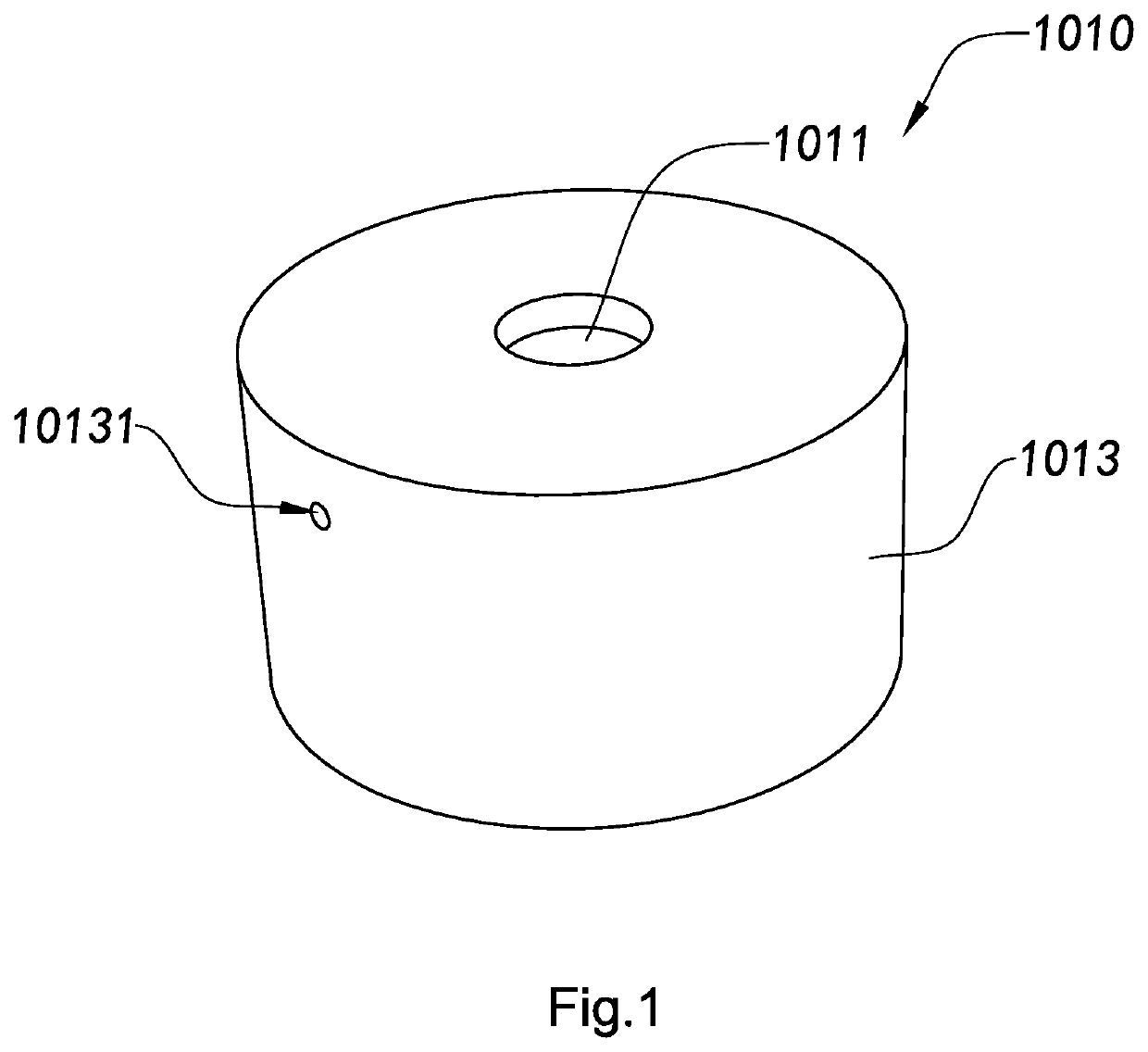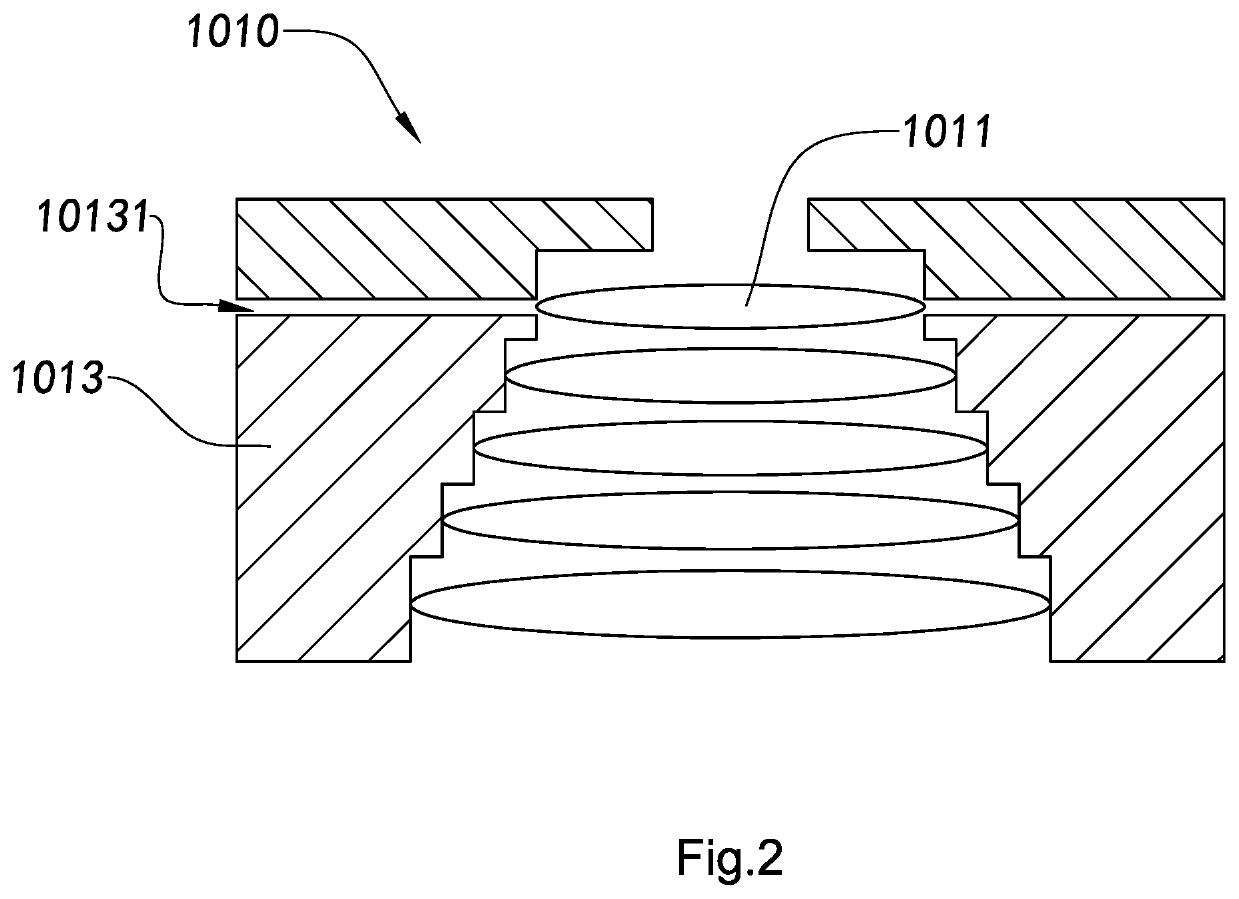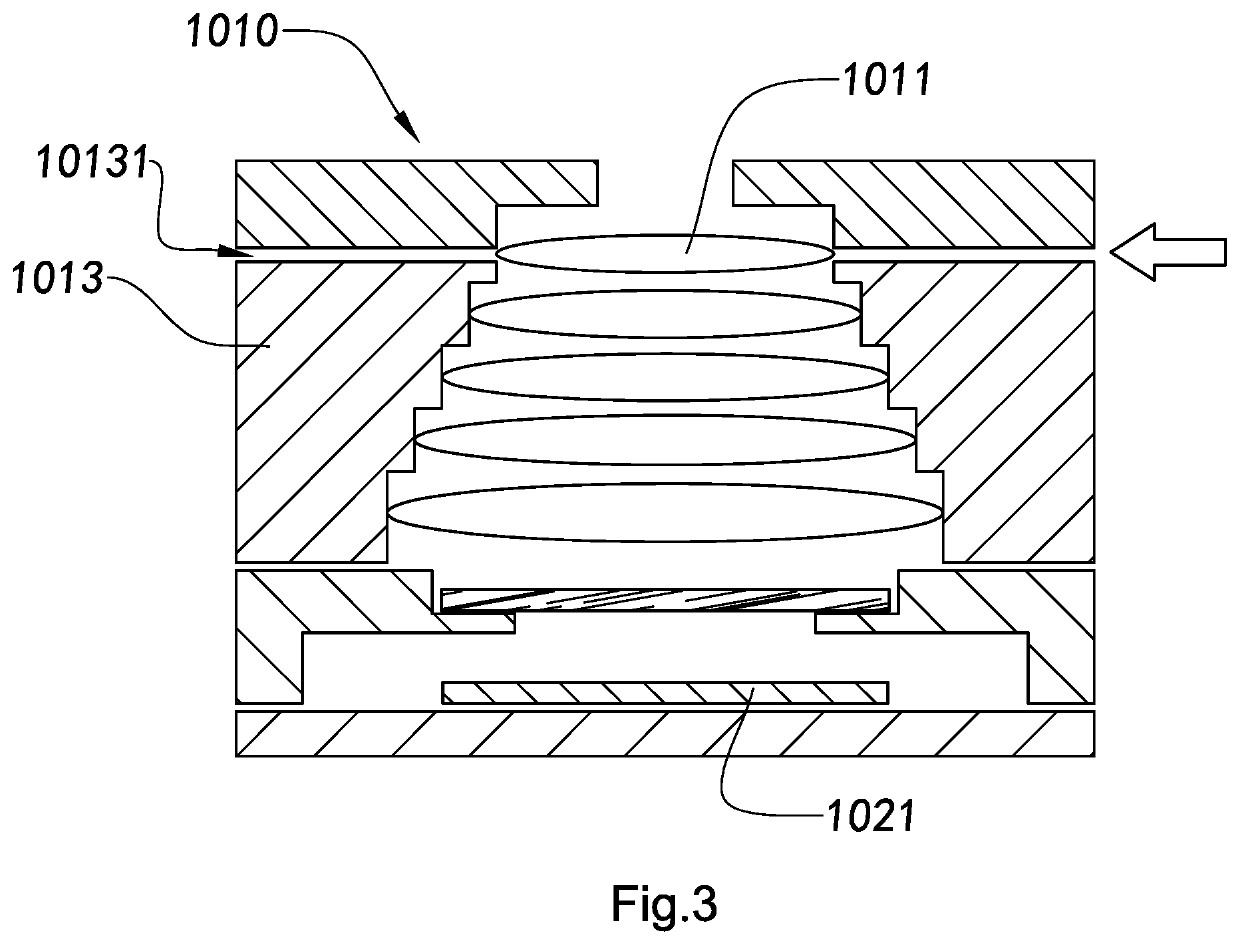Adjustable optical lens and camera module, manufacturing method and applications thereof
a technology of adjustment and optical lens, applied in the field of adjustable optical lens and camera module, can solve the problems of affecting the alignment of the central axis line of the lens and the central axis line of the optical sensor, affecting the application of the high-quality camera module for the market, and generating certain deviations between the central axis lines of each lens
- Summary
- Abstract
- Description
- Claims
- Application Information
AI Technical Summary
Benefits of technology
Problems solved by technology
Method used
Image
Examples
fifth embodiment
[0468]In the step (1704), solidifying the adhesive 1040D through a heating treatment fixedly attaches the first lens 10111D, the fifth lens 10115D and the aperture member 1014D to the optical structural member 1013D. Then, the adjustment channel 10131D is sealed. the sealing is conducted preferably by injecting adhesive into the adjustment channel 10131D, that seals and further fixes the first lens 10111D and the second lens 10112D in position, so as to package the adjustable optical lens 1010D and the photosensitive device 1020D.
[0469]Besides, in the step (1704), the present invention may has at least one adhesive injection channel 10141D provided in the aperture member 1014D for injecting adhesive (e.g. thermosetting adhesive) to further fixed the first lens 10111D and fifth lens 10115D after adjusted. Another implementation can have two adhesive injection channels 10141D that, after the first lens 10111D and the fifth lens 10115D are adjusted, thermosetting adhesive is injected ...
sixth embodiment
[0470]Referring to FIGS. 18-19, the camera module provided by the present invention will be illustrated. Referring to FIGS. 18-19, a camera module comprises an adjustable optical lens 2010 and an photosensitive device 2020, wherein the photosensitive device 2020 comprises an optical sensor 2021. The adjustable optical lens 2010 is arranged along a photosensitive path of the optical sensor 2021 that lights reflected from an object can enter an inside of the camera module through the adjustable optical lens 2010 and be received by the optical sensor 2021 to proceed photoelectric conversion, so that images respective to the object can be subsequently captured by the camera module.
[0471]The photosensitive device 2020 further comprises a filter 2022, a circuit board 2023, and a lens mount 2024. The filter 2022 is mounted in the lens mount 2024 and arranged above the optical sensor 2021. The optical sensor 2021 is attached on the circuit board 2023. The circuit board 2023 is mounted on a ...
seventh embodiment
[0483]Referring to FIGS. 21-22, the camera module provided by the present invention is illustrated. Referring to FIGS. 21-22, a camera module comprises an adjustable optical lens 2010B and a photosensitive device 2020, wherein the adjustable optical lens 2010B is arranged and affixed on top of the photosensitive device 2020 based on the imaging need and aligned in an optical path of the camera module, wherein the photosensitive device 2020 is embodied the same as the above preferred embodiments, which is not repeatedly described in this seventh preferred embodiment.
[0484]The adjustable optical lens 2010B comprises one or more lenses 2011B and an optical structural member 2013B. The lenses 2011B include a first lens 20111B, a second lens 20112B, a third lens 20113B, and a fourth lens 20114B, which are arranged in the internal space of the optical structural member 2013B sequentially along the vertical direction of the optical structural member 2013B and along the photosensitive path ...
PUM
 Login to View More
Login to View More Abstract
Description
Claims
Application Information
 Login to View More
Login to View More - R&D
- Intellectual Property
- Life Sciences
- Materials
- Tech Scout
- Unparalleled Data Quality
- Higher Quality Content
- 60% Fewer Hallucinations
Browse by: Latest US Patents, China's latest patents, Technical Efficacy Thesaurus, Application Domain, Technology Topic, Popular Technical Reports.
© 2025 PatSnap. All rights reserved.Legal|Privacy policy|Modern Slavery Act Transparency Statement|Sitemap|About US| Contact US: help@patsnap.com



